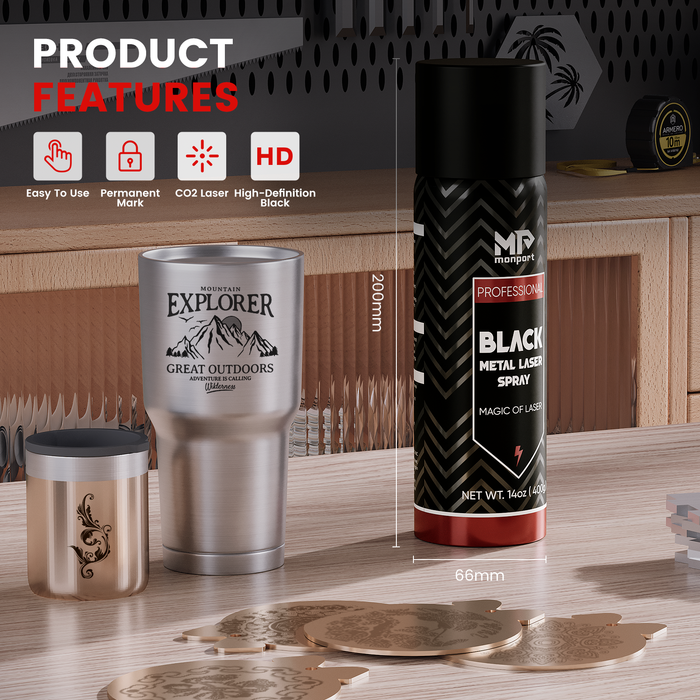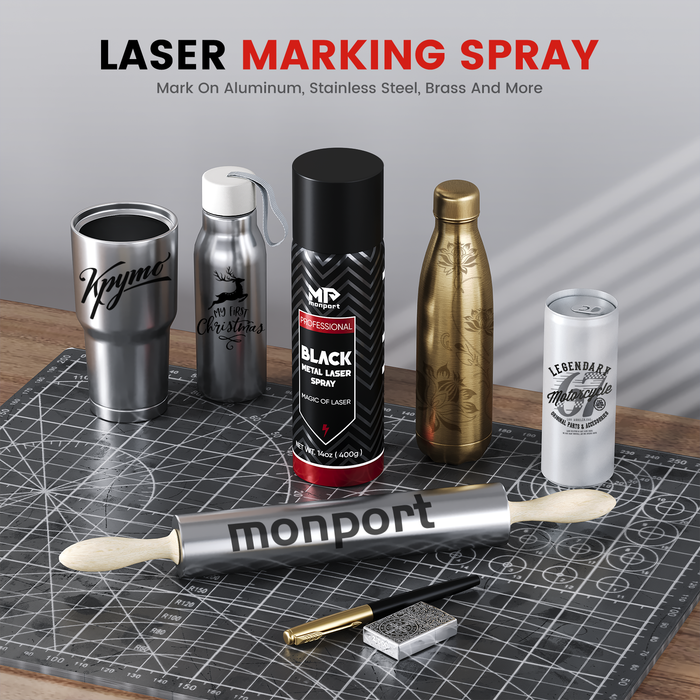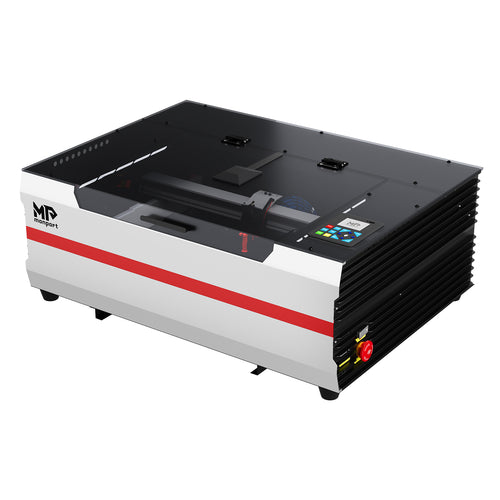CO2 laser engravers are becoming increasingly popular in production facilities, small businesses, and hobbyists, especially when paired with black laser marking spray for enhanced engraving results.To ensure the performance and longevity of these high-powered laser engravers, it is essential to have a water cooling system. This blog will provide a technical deep-dive into the water cooling system of your CO2 laser engraver, focusing on the role of the industrial chiller.
Monport 6L CW-5200 Industrial Water Chiller for 40W-150W CO2 Laser Engraver
Cooling Methods & Differences
There are several cooling methods that can be used with CO2 laser engravers, including water cooling, air cooling, industrial chiller cooling, and thermoelectric cooling. The main differences among these cooling methods are as follows:
Water cooling
Water cooling is the most common type of cooling method used in CO2 laser engravers. It involves circulating distilled or deionized water through a closed-loop system to dissipate the heat generated by the laser tube. Industrial chiller cooling is highly effective and can provide precise temperature control, but it is more expensive than other cooling methods and requires more maintenance. It is especially useful for ensuring that the water temperature remains consistent, even during prolonged use of the water chiller system, which is crucial when using materials like black laser marking spray.

Air cooling
Air cooling involves blowing air over the laser tube to dissipate heat. While air cooling is less expensive than water cooling and requires less maintenance, it is less effective and may not be sufficient for high-powered laser engravers, especially when used in conjunction with black laser marking spray for enhanced marking results. Air cooling may also cause noise and can contribute to a dusty work environment.

Industrial chiller cooling
Industrial chiller cooling is a type of water cooling that uses a separate industrial chiller unit to cool the water before it is circulated through the laser tube. Industrial chiller cooling is highly effective and can provide precise temperature control, making it an excellent choice when working with black laser marking spray to ensure optimal engraving results. However, it is more expensive than other cooling methods and requires more maintenance. It is especially useful for ensuring that the water temperature remains consistent, even during prolonged use.

Thermoelectric cooling
Thermoelectric cooling uses a Peltier cooler to cool the laser tube. While it can provide precise temperature control, it is less effective than other cooling methods and may not be sufficient for high-powered laser engravers, especially when using black laser marking spray for enhanced engraving results. Thermoelectric cooling is also more expensive than other cooling methods.
In general, water cooling is the most effective and widely used cooling method for CO2 laser engravers. However, the choice of cooling method will depend on the specific requirements of your laser engraver and the materials you will be working with.
Industrial chiller cooling may be required for more precise temperature control, while thermoelectric cooling may be suitable for small-scale or low-powered laser engravers using a water chiller system..

What is the cooling system?
The common structure of a cooling system for CO2 laser typically includes the following components:
Water tank
This is a container that holds the distilled or deionized water that will be used to cool the laser tube. The water tank should be made of a non-corrosive material and should be sized appropriately for the laser engraver.
Water pump
The water pump is responsible for circulating the water through the cooling system. It is typically a small, submersible pump that is located inside the water tank.

Water tubing
The water tubing connects the water tank to the laser tube and the radiator. The tubing should be made of a non-corrosive material and be able to withstand high temperatures. It is crucial for maintaining the efficiency of the water chiller system with an industrial chiller.
Laser tube
This is the component that generates the laser beam. The laser tube is filled with CO2 gas and requires cooling to dissipate the heat generated during operation.

Radiator
The radiator is a heat exchanger that is used to dissipate the heat from the water. The radiator typically consists of a series of fins that increase the surface area for heat dissipation. A fan is used to blow air over the radiator to enhance cooling.
Temperature sensor
A temperature sensor is used to monitor the temperature of the water. This helps to ensure that the water is maintained at the appropriate temperature range to protect the laser tube, particularly when working with materials treated with black laser marking spray.
The specific configuration of the cooling system may vary depending on the type of CO2 laser engraver and the manufacturer. However, these components are typically included in most CO2 laser engraver cooling systems. It's important to follow the manufacturer's instructions and proper maintenance procedures to ensure the optimal performance and longevity of the laser tube.

Conclusion
In conclusion, a water cooling system is essential for the performance and longevity of your CO2 laser engraver. The coolant used is typically distilled water, and a recirculating chiller is the most efficient cooling method for high-power lasers. Additionally, a laser water chiller can help to prolong the life of the laser tube, especially when working with materials treated with black laser marking spray. Safety precautions must also be taken when using a water cooling system, such as using antifreeze in cold ambient temperatures and ensuring that the water is clean and free of contaminants. An industrial chiller plays a crucial role in maintaining optimal conditions within a water chiller system.










